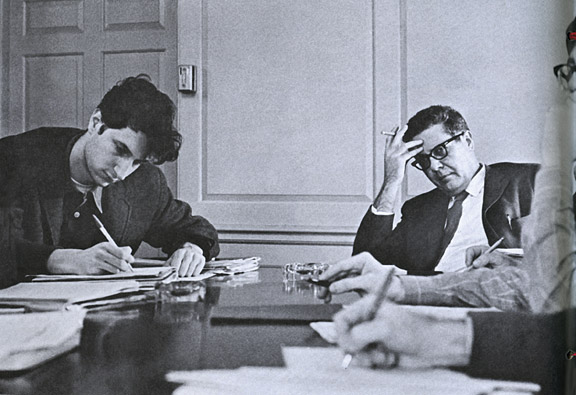In 1850, President Francis Wayland said of the Brown curriculum that “the various courses should be so arranged that, insofar as practicable, every student might study what he chose, all that he chose, and nothing but what he chose.” Wayland foreshadowed the events of 1969, when a Group Independent Study Project led to a paper by Ira Magaziner ’69 and Elliot Maxwell ’68 that resulted in sweeping changes in how students learn at Brown.

If the Brown Curriculum was right in 1969, it is even more so today. It may be trite to say that globalization is making the world smaller and technological change is making it move faster—but it feels true. The value of the specific knowledge that our students learn in college is likely to depreciate quickly. The best education we can provide our students will not only convey discrete bodies of knowledge, but also instill the ability to integrate knowledge across disciplines, learn independently, think creatively, and understand how to collaborate and communicate across cultural boundaries. These are the lessons that last a lifetime.
As part of our planning process, we considered how to keep the Brown Curriculum vital and strong in an era of increasing globalization and technological change. Our new strategic plan, Building on Distinction: A New Plan for Brown, calls for enhanced STEM education, an increased emphasis on fluency in the use and analysis of data and digital technology with a particular focus on the humanities, and new seminars that focus on diversity, identity, and justice. Another proposal is to create new “Brown in the World” courses that will incorporate international experiences into the curriculum. Taken together, these initiatives will enhance the preparation of our students for global citizenship in a rapidly changing world.
The rapid rise of the Internet is an example of how quickly the world has changed. Neither Francis Wayland nor even Magaziner and Maxwell could have foreseen the advent of online teaching technologies. At first glance, online teaching seems antithetical to Brown’s commitment to close interactions between faculty and students. However, through the Sheridan Center for Teaching and Learning, we are exploring the use of online teaching methods that enhance, rather than reduce, close student-faculty interactions. In the future, we plan to extend online teaching in ways that “untether” students from campus, allowing them to study elsewhere while remaining virtually connected to Brown. Our students will not only study what they choose; they will also choose where in the world they study, while remaining integral to and integrated into our campus community.
Real-world experience is an important part of a Brown education. We are planning a robust new internship program that will allow students to apply what they have learned in the classroom to jobs in the for-profit, not-for-profit, and public sectors—and then bring those experiences back into the classroom. These experiences can be transformative for our students. I look forward to working with our many alumni, parents, and friends to help us identify such internships, and to providing the resources required for lower-income students to participate. And, I look forward to seeing how the Brown Curriculum is reimagined and enhanced in the years to come.
The feature is written and produced by the Office of the President independently of the BAM editorial staff.




